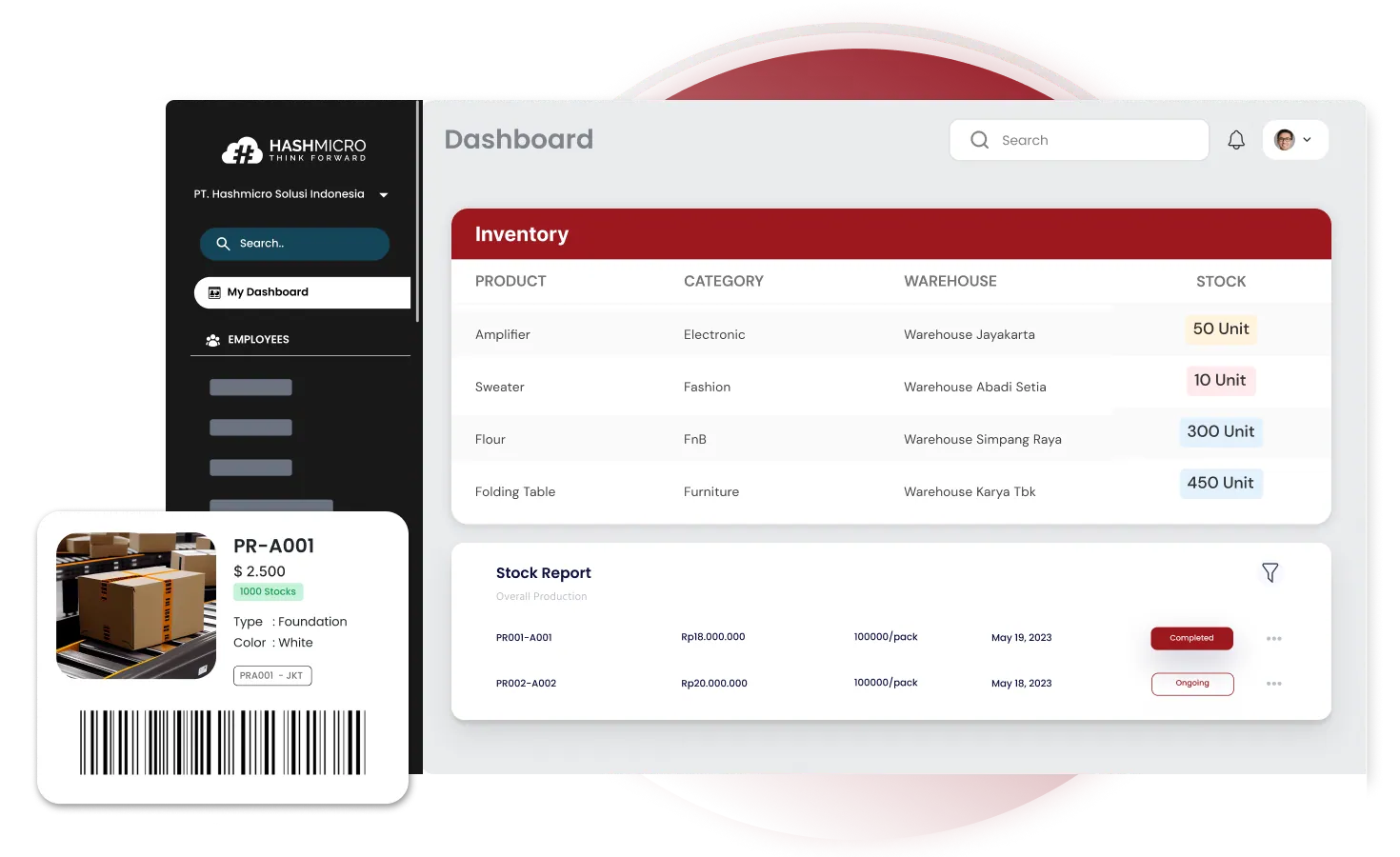An old saying goes, “Failing to plan is planning to fail.” This couldn’t be more true when it comes to managing slow moving inventory. Many businesses in Malaysia struggle with excess stock that takes up valuable space and ties up capital that could be used more efficiently.
In fact, optimizing slow moving inventory is crucial for business efficiency. A study by McKinsey found that slow-moving inventory forms a “long tail,” increasing holding costs and the risk of obsolescence. Identifying and managing these items early helps businesses reduce waste and improve profitability.
Imagine a local retailer with shelves full of winter jackets in a tropical climate. These slow moving items not only occupy space but also prevent businesses from investing in fast-selling products. Poor inventory management like this can hurt profitability and limit business growth.
The good news is that with the right inventory management practices, you can turn this challenge into an opportunity. Let’s explore some proven strategies to optimize your slow moving inventory and keep your business running smoothly.
Table of Content
Content Lists

Key Takeaways
|
1. Maximize Your Marketing Strategy
To get the most out of your marketing efforts, start by assessing what’s working and what’s not. Are you reaching your target audience effectively? Are your product listings appealing and easy to navigate?
Updating product photos and descriptions can make a big difference. High-quality visuals attract more potential buyers and enhance your overall marketing strategy.
You can also align marketing efforts with stock levels using cloud inventory management software. This ensures your marketing campaigns focus on products you need to move, helping you clear slow moving inventory faster.
Once updated, re-market these products through social media, email campaigns, or online ads. Use creative content to retarget users who viewed your products but didn’t purchase. This strategy keeps your
products visible and drives more sales.
2. Use Multiple Sales Tactics
Expanding your sales channels is essential for moving slow moving items. Relying on one platform limits your reach and slows down sales.
Try a multi-channel approach. Use social media, email marketing, and online marketplaces to reach a broader audience. This strategy captures potential buyers from various sources.
Experiment with different promotions. Flash sales, discounts, and limited-time offers create urgency and encourage quicker purchases. Testing various approaches helps identify what resonates best with your audience.
Data-driven decisions can also refine your sales tactics. By analyzing customer behavior and engagement, you can tailor your messaging and offers more effectively. Tools like retail inventory software help track these insights and keep your sales strategies sharp. If you’re curious about the software, you can download the price scheme below!

3. Transform Store Displays
Your store’s visual appeal plays a big role in product movement. Outdated or cluttered displays can discourage customers from exploring your products.
Keep your displays fresh and engaging. Highlight slow-moving products by arranging them attractively and using clear, compelling signage. A well-organized display makes it easier for customers to spot deals and promotions.
Interactive elements like digital screens or product demos can enhance the shopping experience. These features capture attention and help customers connect with your brand.
By regularly updating store displays, you create a dynamic shopping environment that keeps customers interested and drives sales.
4. Bundle Products
Bundling is an effective way to clear slow moving inventory while adding value for customers. Shoppers often prefer bundles because they offer more for their money.
Combine high-demand products with slow moving items to make the bundle more attractive. This strategy not only increases sales but also helps manage low-turnover inventory more efficiently.
For example, if you have aging stock like accessories, pair them with popular items at a discounted rate. Bundles appeal to budget-conscious buyers and clear excess inventory faster.
This approach also boosts average order value, maximizing revenue from each transaction.
5. Optimize Inventory Management
Poor inventory management often leads to overstocking and wasted resources. Without proper systems, slow moving items pile up, increasing storage costs and reducing profitability.
Integrating inventory control into your business strategy aligns stock levels with actual demand. Regular inventory checks help identify slow moving items in inventory and take timely action.
Using cloud inventory management software simplifies this process. It tracks stock levels in real-time and forecasts customer demand accurately. This reduces the risk of overstocking and stockouts.
An inventory report also reveals which products sell well and which don’t. This data helps you adjust procurement plans, prevent unnecessary purchases, and keep your inventory balanced.
Introducing Stock Forecasting with HashMicro

HashMicro offers an advanced inventory management software designed to streamline inventory processes. It provides precise stock forecasts by analyzing historical sales data, helping businesses avoid overstocking and stockouts.
With easy-to-read graphs, the software visualizes future stock needs, simplifying decision-making and inventory planning. Automated restocking recommendations based on sales data further reduce manual adjustments and improve efficiency.
This comprehensive system enhances stock management and ensures your inventory aligns with actual demand. As a result, you minimize excess stock and optimize storage space.
Conclusion
Addressing slow moving inventory is essential for Malaysian businesses to stay competitive. Efficient inventory management prevents overstocking, reduces waste, and keeps cash flow steady.
Regular tracking and strategic adjustments help keep your inventory in check. Advanced tools like retail inventory software simplify stock monitoring and demand forecasting.
HashMicro’s cloud inventory management software offers a complete solution for managing slow moving items. With real-time tracking and automated recommendations, it helps businesses optimize inventory and drive profitability.
Ready to take control of your inventory? Get a free demo today and see how HashMicro can help your business thrive!
FAQ Surrounding Slow Moving Inventory
-
How is slow-moving inventory classified?
Slow-moving inventory is classified based on its turnover rate and sales performance. Typically, it includes items that sell at a slower rate than expected, leading to longer periods of time on the shelves or in storage. Classification can be done using various criteria, such as the number of units sold over a specific period, inventory turnover ratios, or age of the inventory. For instance, inventory that hasn’t sold for several months or exceeds a certain threshold of days on hand may be categorized as slow-moving.
-
How does slow-moving stock differ from deadstock?
Slow-moving stock and deadstock are related but distinct concepts. Slow-moving stock refers to inventory that sells at a slower pace than anticipated but is still sellable and has potential for future sales. Deadstock, on the other hand, consists of items that are no longer sellable or in demand, often because they are obsolete or have become outdated. In essence, while slow-moving stock might still be viable with proper management, deadstock typically requires more drastic measures, such as clearance sales or write-offs.
-
Can you provide examples of slow-moving products?
Examples of slow-moving products include seasonal items like winter coats in a tropical climate, specialized products such as high-end electronics with rapidly changing technology, and overstocks from promotions or discontinued lines with limited future sales potential.
-
What is a slow-moving inventory reserve?
A slow-moving inventory reserve is a financial provision set aside to account for potential losses or write-downs associated with slow-moving inventory. Specifically, it reflects the estimated value of inventory that may not sell within the normal sales cycle, allowing businesses to prepare for possible depreciation or obsolescence. In practice, this reserve helps manage the financial impact of holding slow-moving inventory and ensures that financial statements accurately reflect the potential risk associated with such items.







































